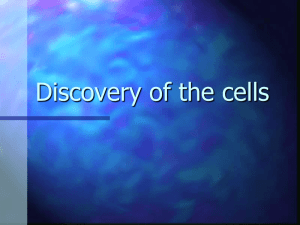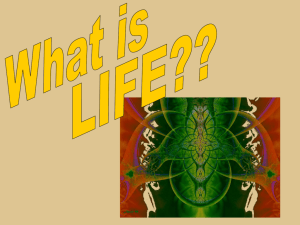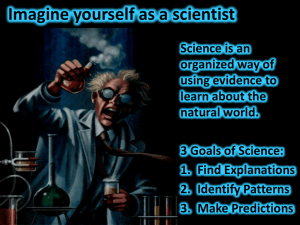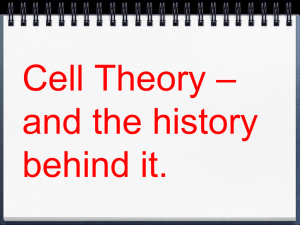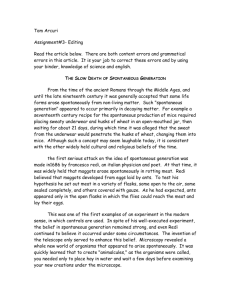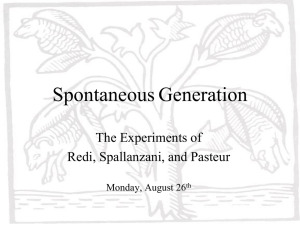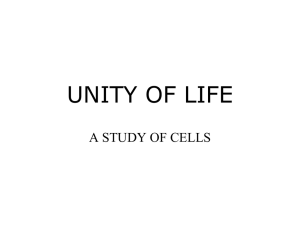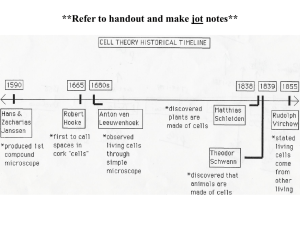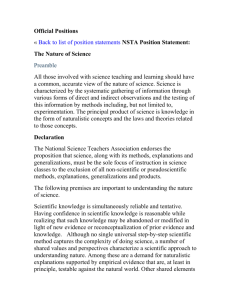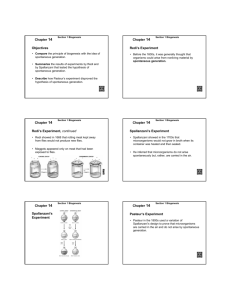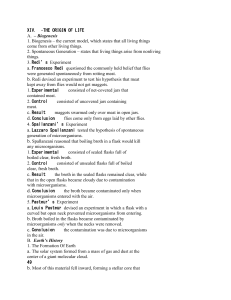Chapter 14: History of Life
advertisement
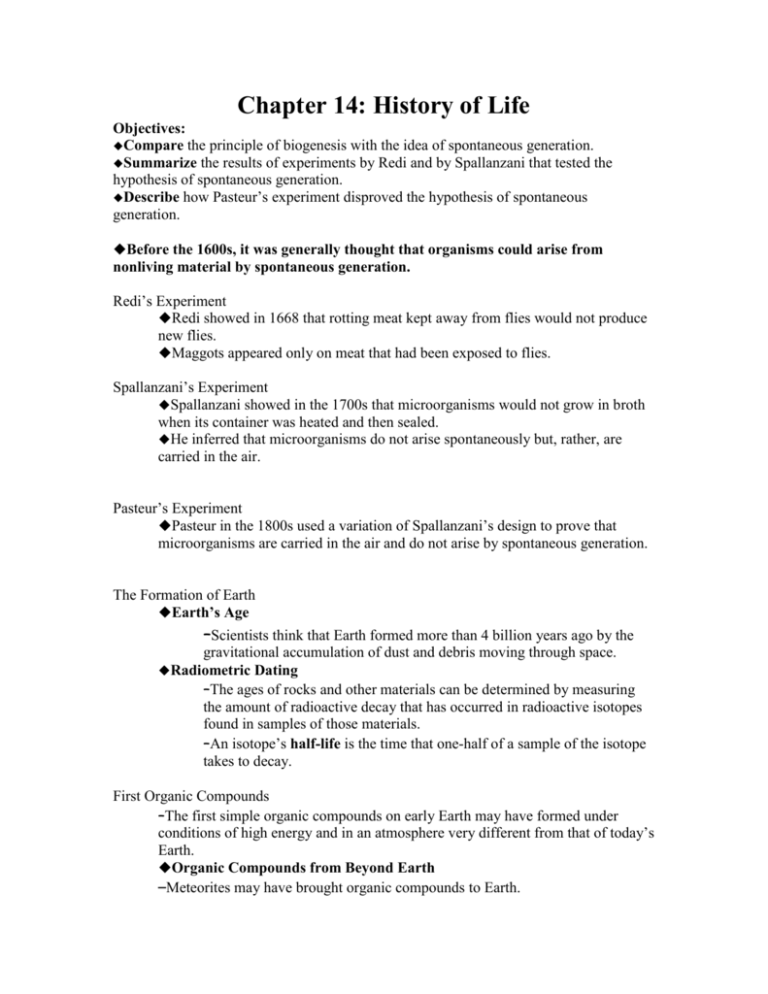
Chapter 14: History of Life Objectives: Compare the principle of biogenesis with the idea of spontaneous generation. Summarize the results of experiments by Redi and by Spallanzani that tested the hypothesis of spontaneous generation. Describe how Pasteur’s experiment disproved the hypothesis of spontaneous generation. Before the 1600s, it was generally thought that organisms could arise from nonliving material by spontaneous generation. Redi’s Experiment Redi showed in 1668 that rotting meat kept away from flies would not produce new flies. Maggots appeared only on meat that had been exposed to flies. Spallanzani’s Experiment Spallanzani showed in the 1700s that microorganisms would not grow in broth when its container was heated and then sealed. He inferred that microorganisms do not arise spontaneously but, rather, are carried in the air. Pasteur’s Experiment Pasteur in the 1800s used a variation of Spallanzani’s design to prove that microorganisms are carried in the air and do not arise by spontaneous generation. The Formation of Earth Earth’s Age –Scientists think that Earth formed more than 4 billion years ago by the gravitational accumulation of dust and debris moving through space. Radiometric Dating –The ages of rocks and other materials can be determined by measuring the amount of radioactive decay that has occurred in radioactive isotopes found in samples of those materials. –An isotope’s half-life is the time that one-half of a sample of the isotope takes to decay. First Organic Compounds –The first simple organic compounds on early Earth may have formed under conditions of high energy and in an atmosphere very different from that of today’s Earth. Organic Compounds from Beyond Earth –Meteorites may have brought organic compounds to Earth. The First Cells The first cells that formed on Earth were probably autotrophic prokaryotes. –The first autotrophic cells probably used chemosynthesis to make food. –Chemosynthesis produces energy through the oxidation of inorganic substances, such as sulfur. Photosynthesis and Aerobic Respiration –Most modern autotrophic cells, such as cyanobacteria, use photosynthesis to make food. –An important byproduct of photosynthesis is oxygen. The First Eukaryotes Eukaryotic cells may have evolved from large prokaryotic cells that engulfed smaller prokaryotic cells. This is known as the theory of endosymbiosis. Early Life Flow Chart Autotrophic prokaryotes –Used chemosynthesis to make food Cyanobacteria –Used photosynthesis to make food –Produced oxygen for the Earth Early eukaryotes cells evolved from large prokaryotes

